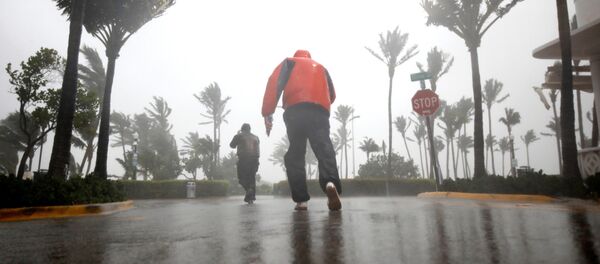According to the Texas first responder, Atkins knew he had necrotizing fasciitis, a serious bacterial infection that damages tissue under the skin, after he was bitten by a mosquito on his wrist.
In a Facebook post, Atkins wrote, "I went kayaking from my house to the back side of my neighborhood checking on people's provisions and attitudes. All was well and people were actually out and about. Came home around 4 pm and noticed a small bite on my left arm not huge but probably nickel sized swelling."
"The next morning, it had gone across the bone on the bottom side of my wrist," Atkins told news station KPRC-TV in Houston.
"Then, like, maybe four or five hours later, it crossed the wrist and got into my hand. Anytime the (swelling) moves across the joint, that's, I've always [been] told that's a bad thing."
Emergency room staff at Houston Methodist Hospital in Sugar Land sent Atkins to the Intensive Care Unit after realizing that he was already developing sepsis, a life-threatening complication of an infection. Atkins had to endure several surgeries to remove the dead and dying issue.
Atkins was finally released from the hospital on Sunday and has been vocal about his experience because other people without training in floodwater rescue may not recognize symptoms of the serious bacterial infection.
"What I would like people to understand is that I went out in storm water," he added.
"I didn't go out in sewage, and so if you look at what's going on in Houston, and you look at the drainage issues, there's way worse stuff in there."
According to the Centers for Disease Control and Prevention, there are several types of bacteria that can cause necrotizing fasciitis.
"In cases of necrotizing fasciitis, bacteria spread quickly once they enter the body. They infect the fascia, connective tissue that surround muscles, nerves, fat, and blood vessels. Sometimes poisons made by these bacteria destroy the tissue they infect, causing it to die," the CDC explains."These bacteria include group A Streptococcus, Klebsiella, Clostridium, Escherichia coli, Staphylococcus aureus, and Aeromonas hydrophila. Public health experts consider group A strep to be the most common cause of necrotizing fasciitis," the CDC writes on their website.
Symptoms can start just a few hours after one is exposed to the bacteria and initially feels like the soreness of a pulled muscle. However, eventually, one's skin can become warm and swollen, and change to a red or purple color.





